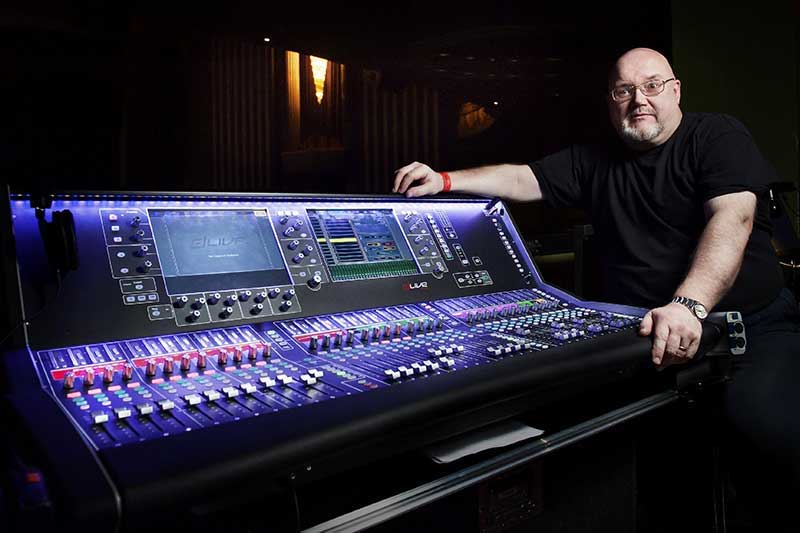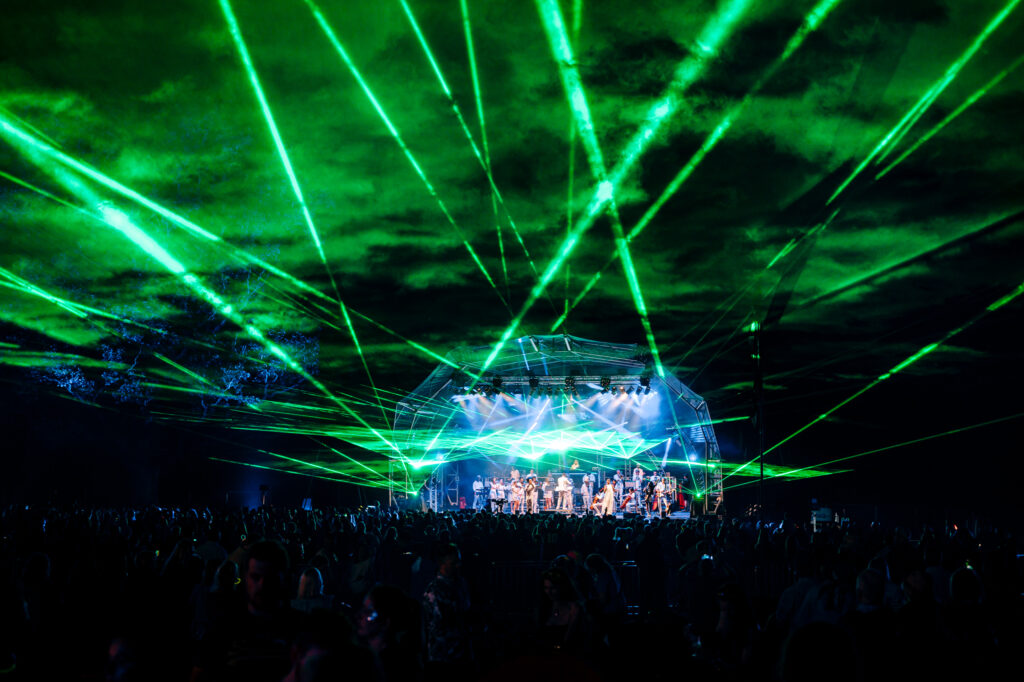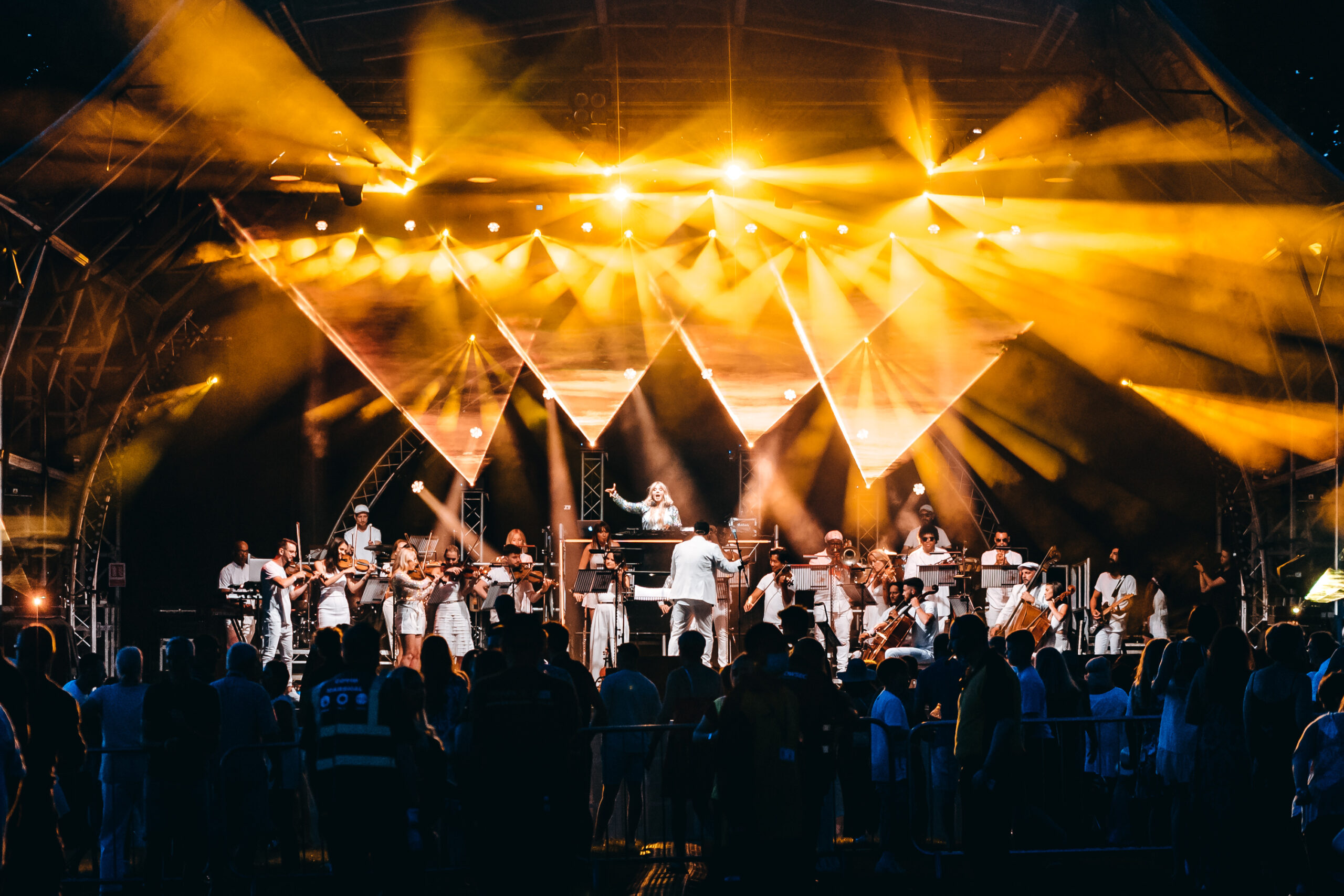Ian Barfoot
Jack Kenyon (dLive Product Specialist) catches up with renowned FOH engineer Ian Barfoot, long-serving FOH man for Rick Wakeman and one of the industry’s ‘go to’ orchestral engineers.
Hi Ian, it is great to catch up with you and it’s nice to hear you’ve been out and about. It sounds like you have been involved in some interesting projects, like Classic Ibiza – “A night of Ibiza anthems played by an internationally renowned DJ and accompanied by a live orchestra”.
I’m fascinated, what’s the setup?
Basically, it is well known Ibiza dance tunes with the usual DJ, beats etc but with a small orchestra of about 30 players. There’s the usual mix of violins, viola, celli and double bass; a small wind section with most players doubling, so we have more inputs than players; horns and a brass section. Add into the mix both orchestral and Latin percussion and you have the orchestra!
We also have a keyboard player, a guitarist and of course the 3 vocalists, two female and one male. The MD/conductor also plays violin, we call it his André Reiu moment! [laughter]
What’s the format of the night?
The performance is split into 3 sections. The first hour is everyone playing, for this they are all seated, sort of traditional. Then we have a kind of interval DJ set for 30 minutes, and then 90 minutes of higher energy tunes performed by everyone, this time everyone except the celli are standing.
It is essentially a family picnic concert so we have a huge age range all out for a good time. The usual venues are greenfield stately home sites so we take everything with us. The average audience size is about 8,000 to 9,000 which is comfortable. Doors at about 17:00 and the show finishes about 23:00.
How does it work musically, I presume the orchestra are reading score? And how does the DJ fit into that?
It is very structured, it has to be for many reasons. We have quite a complex lighting, lasers, SFX and video set up which runs from timecode [LTC] so we run a multi-track playback system with dual redundancy. This provides LTC for lighting and also a solid click track to keep the orchestra in time. There are also vocal cue tracks as an aide–mémoire for the players, but obviously these are not for the audience.
Then there are tracks for BV’s, plus additional string and brass parts for the places where the small numbers on stage need reinforcing, plus the usual tracks of beats and percussion providing the basis of each dance tune. The orchestra is score reading at all times with only keys, guitar and Latin percussion “freelancing”.
How do you fit into the performance, are there scene changes and how do cues work with orchestra and DJ and any video?
I work in a traditional FOH mode really, the only way I know. I see the show as an orchestra playing modern pieces, not dance tunes with additional strings etc so that is how I mix it. I had no experience of that style of music before coming to this so I have no pre-existing ideas I guess, and hopefully a fresh approach.
I have a scene for each song or section with the usual notes on any features, solos or other bits of nonsense [laughter] But this is not a hard-and-fast scene recall show. The scenes are a good starting point but the final mix is a live hands-on affair.
Again I like it like this, it can lead to the odd mistake but ‘to err is to be human’, and if I make the same mistake in the same place I can always claim it is jazz!
Acoustically who wins – the DJ or the orchestra?
That is a definite “no one”, it is my job to make it all fit together neatly. Again, a bit like classical performances, it is the MD/Arrangers job to do that. I just facilitate the fact it can be heard by the audience, hopefully get the best out of each instrument or voice, and throw in a few, very few, effects.
It sounds pretty easy put like that, but there is quite a bit going on most of the time so there’s no rest and not many places to hide. The audience like it a little louder than I do, so the afternoon rehearsal, I like to call it the “Radio Mix”, is hopefully where I get it dialled-in, then in the evening I just manage the volume level. It is not crazy loud, I would just prefer a few dB less whilst keeping the energy.
This brings us to monitors, are the orchestra using IEMs?
Ah monitors, a black art to me! But yes, the whole band are on IEM’s, the only wedges are for Sam the DJ bless her. It would be great if we could get rid of those but to be fair they are not crazy loud, however, with around 50 open mics, any noise can make things messy. We use a mixture of wired and wireless IEMs, and the plan for next year is to put out some personal mix systems, either ME-1’s or OneMix. It’s not finalized yet but will be before we go into rehearsals in May.
What’s your equipment list at FOH?
I use a dLive S7000 with no external equipment. I feed Left, Right and Sub to the system via AES. I will sometimes identify something using the onboard EQ and then chat with Matt Benton, the system engineer, and get him to nail down what I am on about and take care of it. I have worked with Matt for a few years on this and he knows what I am going to ask for before I do I think. It is a great relationship.
On stage, I have a DM64 with a DX32 expander. That gives me plenty of I/O on stage for all the usual, plus a Dante card as we share quite a bit, mainly RF, on the Dante stream. I also use a couple of inputs at FOH for a Laptop with walk-in music, and an output for LTC which I transport down my fibre links for Paul the LD.
Have you tried the new dLive V1.9 firmware yet?
Very funny this, I had a complete brain freeze and swapped to V1.9 for the last show of the season. Most of the crew thought I was mad, but hey let’s live a little! [laughter]
I love it. I have taken to the bus compressor like a duck to water. The NEQ12 band parametric is excellent as I have never been a big fan of graphic EQ. I am still exploring the changes to the compressors but they are quite exciting, well to me at least. I live in hopes of some proper control room monitor outputs but hey, we can’t have everything all at once.
Was this your first outing after look-down? what was it like being out gigging again?
Yes, this was my first live show since December 2019, though I had done a couple of orchestral recordings for Production & Touring based in Somerset. Because of this, I think maybe I did not suffer as much as some.
However it was still very strange, on one hand, it was great to see friends and colleagues out doing what we do, on the other hand, it was a bit like being “new” again. All the things we did as second nature were suddenly not so familiar. In our industry, there is a great feeling of camaraderie which forms a very strong support network though, possibly because of the black humour, it is not always evident to outsiders. You know you have been accepted when the rip is taken out of you mercilessly! [laughter]


